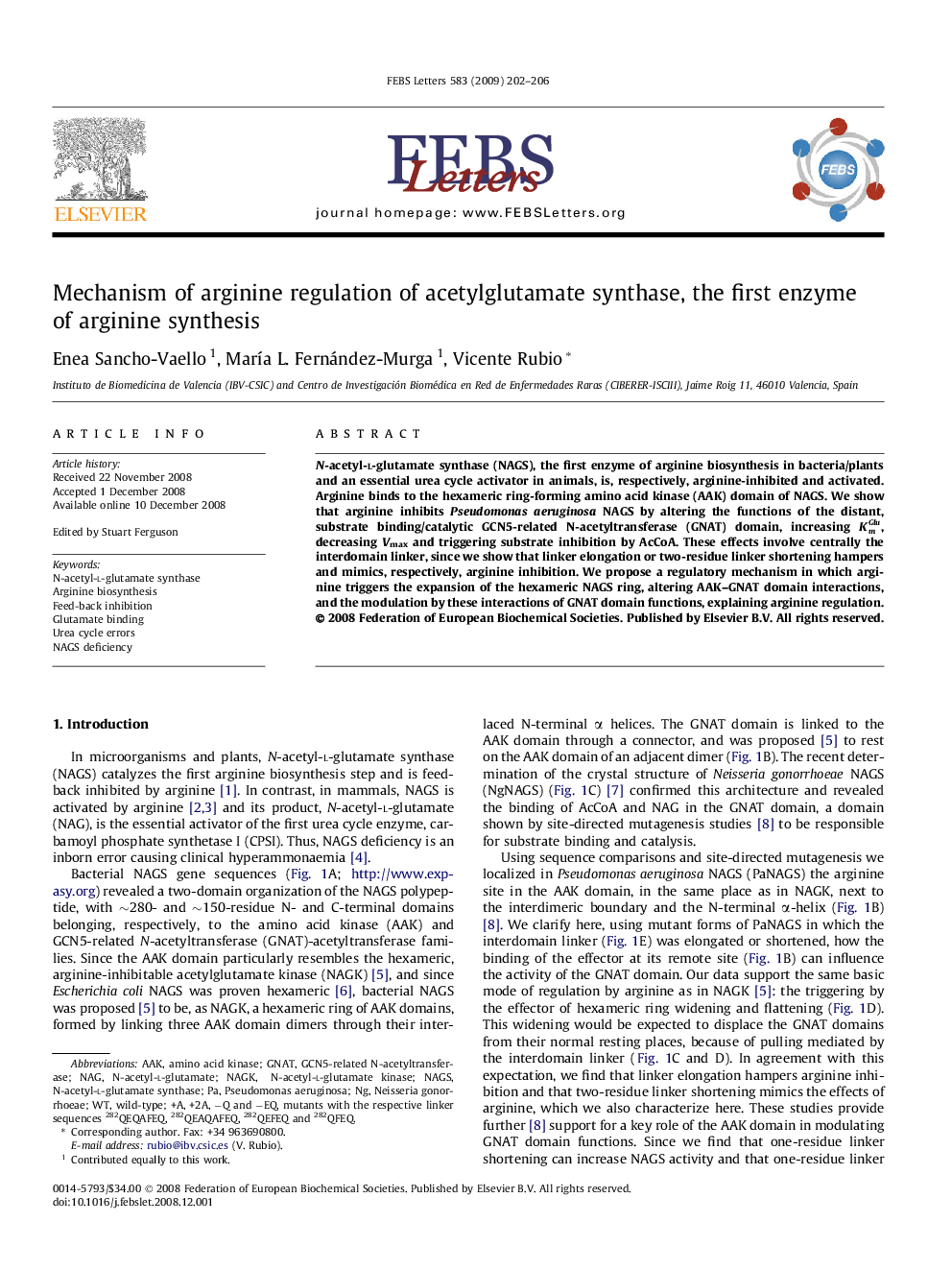| Article ID | Journal | Published Year | Pages | File Type |
|---|---|---|---|---|
| 10872019 | FEBS Letters | 2009 | 5 Pages |
Abstract
N-acetyl-l-glutamate synthase (NAGS), the first enzyme of arginine biosynthesis in bacteria/plants and an essential urea cycle activator in animals, is, respectively, arginine-inhibited and activated. Arginine binds to the hexameric ring-forming amino acid kinase (AAK) domain of NAGS. We show that arginine inhibits Pseudomonas aeruginosa NAGS by altering the functions of the distant, substrate binding/catalytic GCN5-related N-acetyltransferase (GNAT) domain, increasing KmGlu, decreasing Vmax and triggering substrate inhibition by AcCoA. These effects involve centrally the interdomain linker, since we show that linker elongation or two-residue linker shortening hampers and mimics, respectively, arginine inhibition. We propose a regulatory mechanism in which arginine triggers the expansion of the hexameric NAGS ring, altering AAK-GNAT domain interactions, and the modulation by these interactions of GNAT domain functions, explaining arginine regulation.
Keywords
Related Topics
Life Sciences
Agricultural and Biological Sciences
Plant Science
Authors
Enea Sancho-Vaello, MarÃa L. Fernández-Murga, Vicente Rubio,
